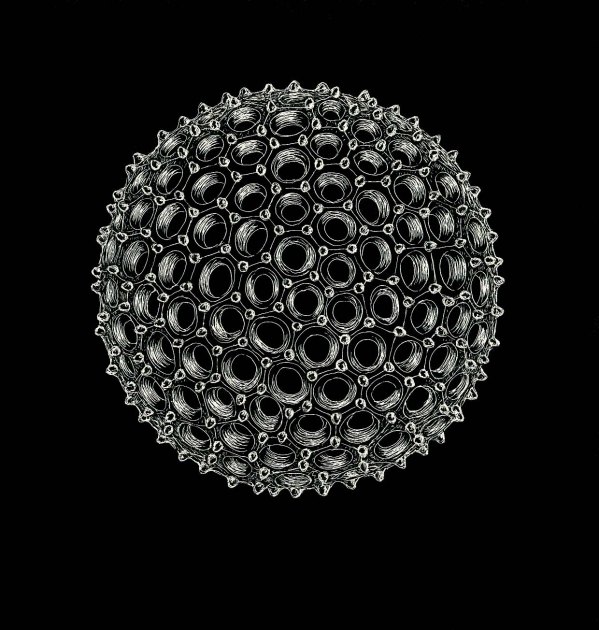
Aulonia hexagona–studied by Ernst Haeckel, with microscopes from the 18th century.
Using handcrafted microscopes, Antonie van Leeuwenhoek was the first to observe and describe microorganisms, which he called animacules. He was the first microbiologist. His skills as a lens manufacturer allowed him to observe a world that no one imagined possible. This happened during the 1670’s. His findings were not met with enthusiasm by his peers:
“Despite the initial success of Van Leeuwenhoek’s relationship with the Royal Society, this relationship was soon severely strained. In 1676, his credibility was questioned when he sent the Royal Society a copy of his first observations of microscopic single-celled organisms. Previously, the existence of single-celled organisms was entirely unknown. Thus, even with his established reputation with the Royal Society as a reliable observer, his observations of microscopic life were initially met with both skepticism and open ridicule.[12] Eventually, in the face of Van Leeuwenhoek’s insistence, the Royal Society arranged for Alexander Petrie, minister to the English Reformed Church in Delft, Benedict Haan, at that time Lutheran minister at Delft, and Henrik Cordes, then Lutheran minister at the Hague, accompanied by Sir Robert Gordon and four others to determine whether it was in fact Van Leeuwenhoek’s ability to observe and reason clearly, or perhaps the Royal Society’s theories of life itself that might require reform. Finally in 1677 [13] Van Leeuwenhoek’s observations were fully vindicated by the Royal Society.” — Via
Almost 350 years later we have been able to observe chemical reactions. We can see atoms with very powerful microscopes. But, does this mean that everyone has seen a cell? Like Leeuwenhoek before us; Science Club and Biology students were able to observe specimens using self-made microscopes at more or less the same magnification: between 50 and 200 times the original size. For this we used: 1) bobby pins, 2) lenses (taken from key chain laser pointers), 3) and a mobile device camera:

Lenses (7 of them, inside the contact lens case), feather & bobby pins.
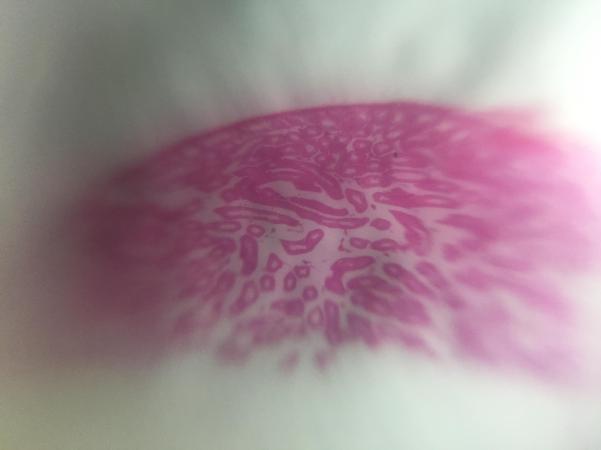
Rabbit Testis

Pine stem, cross section
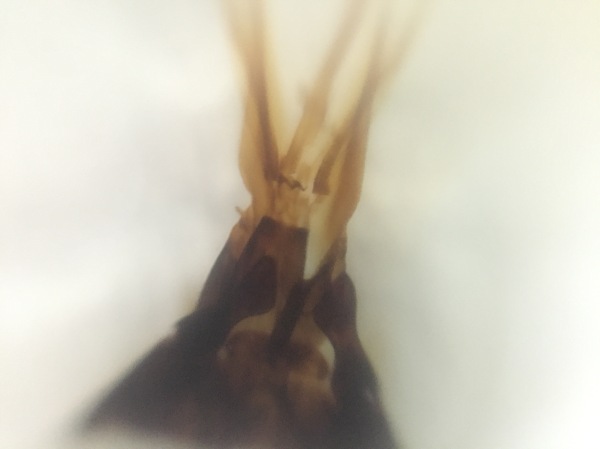
Housebee mouth parts

Hydrilla verticillata
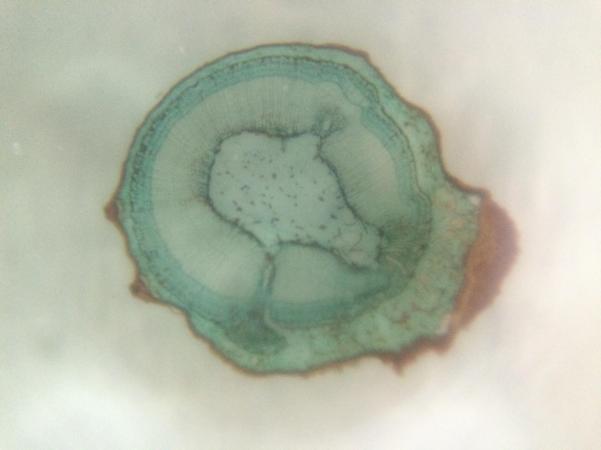
Tilia, stem (North american tree)
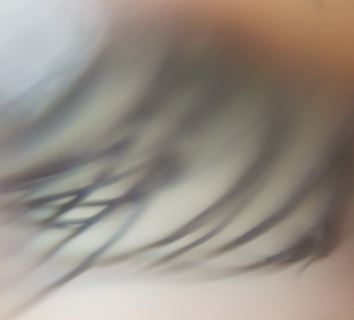
Eyelashes
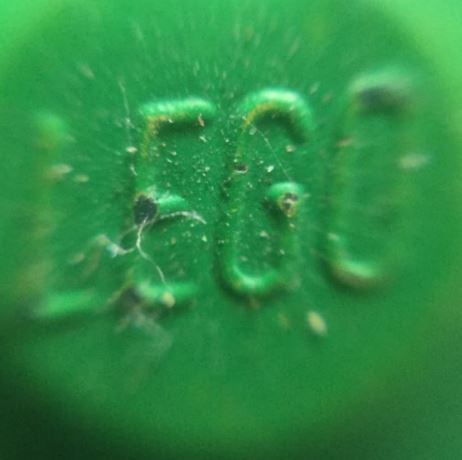
Lego stud
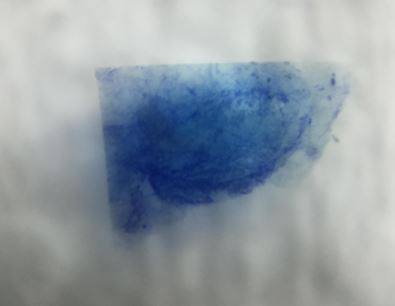
Pig Motor Nerve
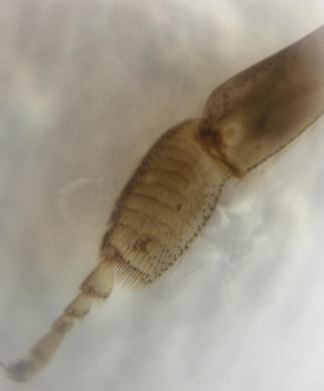
Honeybee worker leg composite I

Honeybee worker leg (detail)

Cross section of a single dog food grain (low fat)
[H/T] for the photos to: Adriana, Gerardo & Gustavo (Science Club); Ana & Lorenzo (10-5); Sofía, Diego, Bianca, Christian & Andrea (10-4).

We HAVE to do this in AP Bio.
LikeLiked by 1 person
We will.
LikeLike
It was a great experience doing this lab. It’s really amazing that we can see these magnifications with our phones with lenses put on. But having this advantage it took many years in constructing the perfect microscope ever since the discovery of cells (Robert Hooke). When the Royal Society finally gave approval to Anton van Leeuwenhoek’s observations of the first bacteria ever seen, scientists were now thrilled to get a microscope of their own to observe microorganisms. As time passed technology got better and new innovations came. In 1878, Ernst Abbe did a mathematical theory in making light used in wavelengths to make the resolution better. This led in 1903, Richard Zsigmondy used that theory to make the ultramicroscope. In 1938, Ernst Ruska invented the electron microscope (figured out electrons enhanced the resolution). Lastly in 1981, Gerd Binnig and Heinrich Rohrer used 3-D specimen images to make the scanning tunneling microscope. These innovations were steps in making the microscope better each year and it keeps getting better. Now, we can use our phones to look at some microscopical images thanks to Leeuwenhoek’s discovery.
http://www.microscope.com/education-center/microscopes-101/history-of-microscopes/
LikeLike
It says a lot about human beings, the fact that we can magnify our senses to the point of looking at things that are far away, or incredibly small. The microscope–and the telescope–are technological developments that changed the way human beings see the world. And this has not stopped. The same can be said of the internet.
LikeLike
One of the labs performed in the classroom was the DIY Microscope. This lab taught us how to construct our own microscope using our phone, a magnifying lens, bobby pin, and tape. It was creative and fun because it was done by ourselves and we got to see different cells magnified. It was done in teams, everyone got a chance to test the microscope using their own phone, and each of us took pictures of different objects. As shown before, different pictures were taken with the microscope, showing the capacity of the microscope and the various objects that were magnified. This lab showed us how, with the technology of today, we can even construct our own microscope using tools all around the house, in comparison to the difficulty scientists had back around the 1600’s.
LikeLike
Keep in mind that there are more powerful lasers out there, meaning that you can do your own microscopes with a lot more magnification. This video shows how we can update our microscopes with an actual stage: http://www.instructables.com/id/10-Smartphone-to-digital-microscope-conversion/
LikeLike
I felt amazed with the image that came up in the iPhone. The complexity of how the organisms look up close was very interesting. Through the details revealed by the picture using the microscope we can study and analyze the organism. I found it surprising how with just a bobby pin and lenses you can transform your phone into a microscope.
The invention of the microscope gave science a boost. It helped scientists see beyond their world, to get outside the box and investigate the world of the cell. Science was taken forward. In the year 1667 Robert Hooke studies various object with his microscope and the publishes his results in Micrographia. Anton van Leeuwenhoek in 1675 uses a simple microscope with only one lens for the purpose to look at blood, insects and a variety of other objects. He was the first to describe cells and bacteria. During the 18th century there were several technical innovations to make the microscope better and easier to handle, which leads microscopy to become more popular among scientists. In the year 1878 Ernst Abbe formulates a mathematical theory correlating resolution to the wavelength of light.
As we enter the 20th century other scientists collaborated to the development of the microscope. Richard Zsigmondy develops in the 1903 the ultramicroscope and with this he is able to study objects below the wavelength of light. He won The Noble Prize in Chemistry in the 1925. During the year 1932 Frits Zernike invents the phase-contrast microscope that allows the study of colorless and transparent biological materials. He won The Nobel Prize in Physics during the year 1953. In 1938 the scientist Ernst Ruska is able to develop the electron microscope. In the year 1986 he won The Nobel Prize in Physics. Gerd Binning and Heinrich invented in the year 1981 the scanning tunneling microscope that gives three-dimensional images of objects down to the atomic level. In 1986 they won The Nobel Prize in Physics.
If it wasn’t for Leeuwenhoek and his discoveries seeing bacteria, which he called, “animalcules”, we would have taken longer or maybe we would have never gotten to see the magnificent and complex world of cells.
I would like to investigate blood, an apple piece, a flower petal and a human nail piece using the microscope. I am interested in investigating these things because I´m curious about how their structure looks when we magnify it under the microscope.
https://www.nobelprize.org/educational/physics/microscopes/timeline/
LikeLike
If it hadn’t been for Leeuwenhoek’s experience as a lens manufacturer, he might have never discovered microorganisms and might have never been the first microbiologist. It amazes me how something that was so scarce and uncommon during that time period could’ve been attempted simply with a modern day smart phone, bobby pins, and lenses could be attempted in our classroom. With this experiment, we were able to get the same results that Leeuwenhoek was able to get all those years ago. To quote Leeuwenhoek himself: “Whenever I found out anything remarkable, I have thought it my duty to put down my discovery on paper, so that all ingenious people might be informed thereof.” It’s a good thing Leeuwenhoek wrote down his discoveries, as they served as an important guide for future research.
http://www.brainyquote.com/quotes/authors/a/antonie_van_leeuwenhoek.html
LikeLiked by 1 person
Microscopes, telescopes, smartphones, Large Hadron Colliders, can’t hold a candle to writing as a technological achievement. Check out this blog post from Oxford University, on writing as technology: http://blog.oup.com/2014/04/writing-as-technology/
LikeLike
During this activity, we used items that are accessible to most of us, a bobby pin and a laser pointer lens. The magnitude of these lenses were similar to the first microscopes ever, Leeuwenhoek’s microscope for example. Leeuwenhoek’s microscopes were small, approximately 2 inches long and 1 inch wide, our microscope is even smaller and his had a magnitude ranging of around 70x or 250x, and ours had a magnitude of around 120x. We may not be able to observe everything, but we were able to see things that are too small for the human eye, for example, rabbit testis and a worker honey bee’s mouth and legs. In my opinion, I really liked this activity because some of us students, including myself, strive to be scientists in the future, and this helped us understand that to be a scientist you don’t need to have expensive equipment, just imagination, curiosity and determination.
Links:
https://micro.magnet.fsu.edu/primer/museum/leeuwenhoek.html
LikeLike
As we learned in class, Anton van Leeuwenhoek was the first scientist to make a microscope with such powerful lenses. He refused the idea of spontaneous generation. Making him the first to observe and describe microorganisms, yet no one believed him especially the Royal Society. They thought he was crazy for thinking he had observed microscopic single-celled organisms, but how could anyone believe him when no one believed that single-celled organisms existed. Therefore the Royal Society made a decision and appointed a few members to prove who was right and who was wrong. Leeuwenhoek came out victorious making the Royal Society finally accept his findings.
Because of Leeuwenhoek’s findings and his creation of the microscope, there have been many breakthroughs in science. An example is observing chemical reactions and atoms. With the experiment done in class, we were able to see various cells, different cells, which was pretty cool. We were able to see those cells with a lens put in front of our phone’s camera which was held with a bobby pin. These lens had a magnification of up to 200 times their original size. Showing us even the dust particles of objects including the things you are unable to see with the naked eye and only with powerful microscopes. This showed us that life is not just what you see. There’s more to life than the naked eye can detect.
Here’s a link about Leeuwenhoek and Hooke and how they learned about one another. It also talks about Leeuwenhoek and his career before becoming a scientist and during. It also shows the things he did to build his microscope and the microscopic world including microbiology: http://www.famousscientists.org/antonie-van-leeuwenhoek/
LikeLike
I don’t blame the Royal Society for being skeptical about Leeuwenhoek’s observations. It is known that one behavior that all human beings share is that we fear or ridicule the unknown. To a human from this century, these observations might seem obvious or simple, but to a person living in the 1600’s those observations might have been mind-blowing. I hope that a new astonishing discovery like this one takes place during my lifetime. This article also makes me think of education and how it evolved during time. In the 1600’s, observations and experiments mentioned on this article were made by people older in age because these concepts were seen as too complicated for the general knowledge of teenagers of the age. In addition, these subjects were not valued as worthy in the curriculums of public schools. Now, on the 21st century, Leeuwenhoek’s observations and experiments, using microscopes, are studied on almost all high school curriculums. It is amazing how humans and nature are in constant evolution.
To watch a short presentation about education in the 1600’s, click on this link: https://prezi.com/xbdvh35-krf2/the-history-of-american-education-1600s-1700s/
LikeLike
My classmates did the DIY Microscopy. Sadly, I was absent that day, but I wish I wasn’t. The fact that humans are able to magnify such small objects is truly wondrous! In Leeuwenhoek’s time, he had to build the microscope from scratch, when today in day, we can take bobby pins, a lens and our smartphones, not to mention the fact that we have such easy access to microscopes, though not everyone seems to realize how lucky we are to have access to this type of technology. Some engineers are even trying to create a lens that magnifies much more than the cellular level—for smart phones! Imagine having a cellular microscope in your very own pocket! I believe this activity was very educational and fun for those who did it.
http://www.iflscience.com/technology/perfect-lens-breakthrough-could-turn-your-smartphone-scanning-electron-microscope
LikeLike
Let me know during the next few days when you’re to do the lab.
LikeLike
This was a really fun lab experiment, with simple materials we were able to magnify very small objects just as a real microscope would do. It is impressive to see how many advances in technology have been enriching our daily lives compared to the time when Anton Van Leeuwenhoek lived. He was a really determined and curious scientist who wanted to discover a world that could only be seen through magnification and he achieved this by being creative and making his own simple microscope just as we did in the lab. He left a great legacy on this planet by leaving his greatest work and invention, the microscope, which modern scientist have been improving to perfection for the use of various purposes. Surely, this has been one of the most successful tools in science ever invented.
LikeLike
If we could attribute the development of both science and art to a single human trait, that would be curiosity.
LikeLike
Anton van Leeuwenhoek was an unlikely scientist. He had no money, received no high education or university degrees, and knew no languages other than his native Dutch. This would have been enough to exclude him from the scientific community of his time completely. Yet with dexterity, an unlimited curiosity, diligence and an open mind free of the scientific doctrine of his day, Leeuwenhoek succeeded in making some of the most important discoveries in the history of biology. His researches, which were widely circulated, opened up an entire world of microscopic life to the knowledge of scientists. Leeuwenhoek is known to have made over 500 “microscopes”, of which fewer than ten have survived to the present day. The fact that we were able to construct our own little microscope with such accessible materials in the classroom is truly fascinating and makes me excited for the future and what it has in store for us. It shows how much we have evolved as humans and how much our curiosity has grown. I really look forward in doing similar labs in class.
LikeLike
One good way of finding inspiration to do stuff that we think is impossible, is to read about the lives of these people.
LikeLike
I really liked this lab. It is a clear example that with everyday materials we can create something we never thought of. Using simple materials we were able to create a microscope with almost the same magnitude as the first one ever invented. Thanks to Anton van Leeuwenhoek, technology evolved. Because of his invention we were able to discover a whole new world. Also, his invention revolutionized science. Because of his invention, nowadays we can make things invisible to the naked eye visible.
LikeLike
I really liked this lab because we were able to magnify on different objects by simply using our phones. If we think about how hard it was for scientists like Anton van Leeuwenhoek to observe cells because they didn’t have the resources we can comclude that humans have come a long way with the devoloment of technology. It was fun to observe things without having to go to a lab or buying expensive equipment. We have to appreciate previous scientists that created not only the microscope but all of the different materials we have today that make our lives easier and better. Some examples are: Internet, medicine, cars, airplanes, etc.
http://www.visioneng.com/resources/history-of-the-microscope
LikeLike
This lab was an eye-opening experiment about how technology has evolved, from Anton van Leeuwenhoek’s time to now. Us, humans, can even create a microscope using only our phones. Technology in science has evolved in a big way. To see how many little details the leg of honey has is amazing. More amazing is the fact, that we could see it through the camera of our phones and materials we have accessible to us. Anton van Leeuwenhoek didn’t have the advantages we have right now. Thanks to scientist’s curiosity, we have the microscope that has helped with many discoveries. This demonstrates the advances in time us, humans, have undergone. This same curiosity could lead to, one day, solving the greatest mysteries of all time.
LikeLike
This lab, recently done it class, was a great experience because it showed us how with simple objects, a bobby pin, a lens, tape and an IPhone camera. It also showed us that since the time Anton van Leeuwenhoek viewed, with a handcrafted microscope, microorganisms that technology has advanced so much since the 1670s. As I saw the pig motor nerve and the leg of a honey bee, I was amazed of how it looks with a simple microscope using our phones. This showed me that we need to appreciate the things we have around us to be more curious about the world and finding the answers we seek. Like the IPhone used in doing this lab is an accessible object that we use in our every day lives and that instead of texting we could use it to gain knowledge.
LikeLike
I remember being really excited this day because I personally love photography and I was amazed by the photos that my own phone took with the help of the lenses the teacher provided. I may have gotten cocky at one point, but we don’t need to mention that. I would have loved to see it with a real lens from a real microscope, to see all the detailing from the organisms or objects under the lens and light. And maybe see how the microscopes from back then would have differed from the ones from today’s society.
P.S. three photos were taken by me from ^^^^
LikeLike
This post and the lab in which I took part of taught me two things: how we can make useful inventions by using the simplest materials and how rough society was back in the day. It is intersting to see how one can create things out of the simplest materials we have in our daily lives. By just taking some materials in your house (in this case the bobby pins,the lens and the camera from any mobile device), you can create tools that can help you throughout your daily life or just for entertainment (like the diy microscope).It shows how creative we can be and how many helpful inventions we can create in the future. The other thing that I learned was that how society has changed throughout all these years. If a scientist discovered something new, chances are that society may believe it; but in Anton’s time, people would not believe him and it would take a long time for society to slowly start accepting these new discoveries. It’s a good thing that siciety changed because since we are accepting new things, we can advance more rapidly.
LikeLike
I have been dying to do this experiment! I have been wanting to do this since I saw a youtube video on it. I was amazed at the way it assembled easy and they had very good magnification! It’s one of the simplest of microscopes and totally doable for any person that has enough curiosity to explore things that lie unseen. I thought it was really cool and I am very happy that we got to do this in class. It is crazy to think that simple experiments like this, back then, they were huge discoveries. People were able to report on things they have not seen before. For the first time, they could see the unseen world that has been lying under their noses. For centuries this technology has been improving and finding new ways to reach the next level because we as human beings are very curious! Today, we even mix other technologies like fluorescent tags, polarized filters, or computers to the technology of microscopes themselves. It is impressive to think that we have come so far with science and our everyday influences to improve our daily lives with new technology. I am glad that I had the chance to attempt this DIY microscope experiment so i could get some other perspectives in life.
I also looked up some other pictures taken with this same DIY microscope and they are pretty neat. Go check them out!
http://jonathan.lansey.net/pastimes/microscope/index.html
LikeLike
this lab was very entertaining for me. it showed me that if you really want to accomplish something you don’t need extensive resources to do so just from materials you can find sitting at home you can and it’s not even comolicated. also, in reference to van leewenhoek, i admire his persistence and creativity. years passed after his evidence was categorized as legit and he probably at some point doubted himself i mean.. who hasn’t? i would gladly do this lab again and would want to observe more complex materials and organisms.
LikeLike
This lab reminded me of the Magnifying the Universe infographic, one of the first things we did this school year. Both put my place in the universe into perspective. It is amazing what we can do with ordinary, household objects. After doing this lab at school, I was inspired to recreate the project at home. I went to Walgreens and bought a laser pointer, and when I came home, I took magnified pictures of many things. Objects ranged from shoe leather and rugs to plastic bags and even dish soap. It was a very unique experience that I’m sure I won’t forget soon.
LikeLike
I loved this lab because we had a lot of fun looking at different specimens with our own phones! We could see many details we could not see with our naked eye just by using a lens from a laser pointer. I have always liked to “invent” something and this lab gave me ideas of making my own microscope, like Leeuwenhoek did. This lab also showed us that phones have more uses than just to text or play. If we could do a microscope with our phones to look at small things, then maybe we can do a telescope to look at things very far away. Maybe in the future we might use our phones to see smaller cells, like bacteria, or we could have a projector integrated to the smartphone. Or even holograms.
LikeLiked by 1 person
Check out these holograms that react to touch https://youtu.be/AoWi10YVmfE
LikeLike
This, in my opinion, this has been one of the most interesting labs we have had during the school year. It allowed us to observe objects that we would have never thought we would have been able to see with our phones. It just goes to show how much technology surrounds us and how little we utilize it to discover and create new things. For example here’s another way we can use or smartphones for other purposes. https://www.google.com/amp/www.instructables.com/id/Build-A-Smartphone-Projector/%3famp_page=true?client=ms-android-oneplus . We can use our smartphones to build many other interesting things such the projector linked above.
LikeLiked by 1 person
Precisely the link Giancarlo posted exemplifies the mind-opening factor that this lab has. Now we look for other tools we can create with our phones, and see the phones as tools not merely phones.
LikeLike
During this lab, we had the opportunity to magnify and observe objects we are unable to see with our naked-eye with just the help of a laser crystal, smartphone camera and some tape. I find it interesting how far technology has come. For me it was a great experience because through activities like this we are able to realize that there is no need to buy expensive equipment if we just appreciate and make good use of the different technological devices scientist have create that help facilitate our everyday life. Here are some advantages of microscopy: http://www.nature.com/nprot/journal/v7/n9/fig_tab/nprot.2012.096_T1.html
LikeLike
Manu prakash designed an origami microscope: http://www.latimes.com/science/sciencenow/la-sci-sn-manu-prakash-macarthur-award-20160921-snap-story.html
LikeLike
Facing the fact that this was one of our labs, I can use my experience from it to write a little about the DIY Microscope. It is truely facinating how easily you can build a microscope just using your phone and a mini lense. I was shocked at how well it worked because one is used to seeing these suffisticated microscope and when you lookat your homemade one you do not expect for it to have such a good outcome. Working with this gave great satisfaction because now I know that you do not need a milliondollar microscope to learn a little about small substances not seen by the naked eye.
LikeLike
This lab is remarkably mind-opening because it is so simple yet it allows for the student to feel great curiosity, which is key to any scientific discovery. I believe this lab is comparable to Newton’s discovery of the visible light spectrum because it was so simple but it was able to open his mind to many possibilities and it further encouraged his experiments.
http://www.thestargarden.co.uk/Newtons-theory-of-light.html
LikeLike
This lab is amazing because it has the capability of making a little part of the microscopic world easily accessible. This lab uses materials that you can easily find at the household to show us images that are astonishing. To people who had never been able to look through a microscope, this turns out to be a very affordable way to get the chance to see things from a different perspective. Unfortunately, not everyone has been able to see the cell; whether they had not a chance to see it or simply are ignorant enough to realize that such world that he can not see exists. The link below shows an additional DIY microscope that I found quite interesting.
LikeLiked by 1 person
I really enjoyed this lab. I never thought that a microscope could be so easy to DIY! I learned that technology has made the microscopic world much more accessible than it was in Antonie van Leeuwenhoek’s time. With just a bobby pin, a lens, and a smartphone camera you can open your mind to a different perspective of the world. Just like you can DIY into the micro world, you can also DIY into the macro world. You can make a DIY telescope using some lenses, a paper towel roll, a piece of paper, and tape: http://www.hometrainingtools.com/a/telescope-optical-science-project.
LikeLike
I found this lab extremely interesting because i consider myself a DIY kind of guy, but I would never had thought my smartphone camera had the power to have the same magnification as a 1600’s microscope. This opened my mind and have me question what things I may have to my reach that can help me understand the composition and behavior of the ecosystem. Definitely, technology will keep evolving and maybe in a couple of years the next smartphone will have the capacity to identify constellations accurately and or think like a human using algorithms.
Here are some interesting Samsung patents that can have a positive effect on our daily lives.
http://www.trustedreviews.com/opinions/samsung-patents-that-will-shape-the-future-of-smartphones
LikeLike
This exercise truly amazed me, taking the whole class back in time to when Antoine had to use a similar microscope to be able to see animacules (according to him). Apple might have to produce a new iPhone with these instruments already incorporate in order for scientists to have a portable microscope. Although the magnification is not the ideal one, it is sufficient to be able to see many organ or mechanisms of different animals, whether small or large ones. This intriguing discovery gave birth to an innovative way and obviously changed scientific history forever, allowing scientists to get a closer look to virtually anything they desire, just as we did in this class assignment. If were not for Antoine van Leeuwenhoek, we would basically know nothing about anatomy or life processes, or maybe at least slow down the discovery process of Science. The rush one feels as they take pictures of extremely small things, with phones and simple instruments, helped the whole Biology class experience what van Leeuwenhoek experienced just as he made one of the biggest scientific discoveries in the history of mankind.
LikeLike
Amazingly enough with common objects that we might all posses we can all become scientists and observe dna in different organisms. I was surprised how simple and effective it was, just to thibk that us as 12th grade students could do basically the same job as trained scientist. I vould say that this helped all of us in the classroom to observe what is really inside organism, and determine what they look like and why they do what they do. If it werent for this experiment i might not have ever gotten the chance to feel like a scientist maybe looking añat bacteria ir different types of cells for organisms and determine why they look that way. I really recommend this to future biology students whenever they have free time, to just sit down and observe so they realize how much they can do with so little.
LikeLike